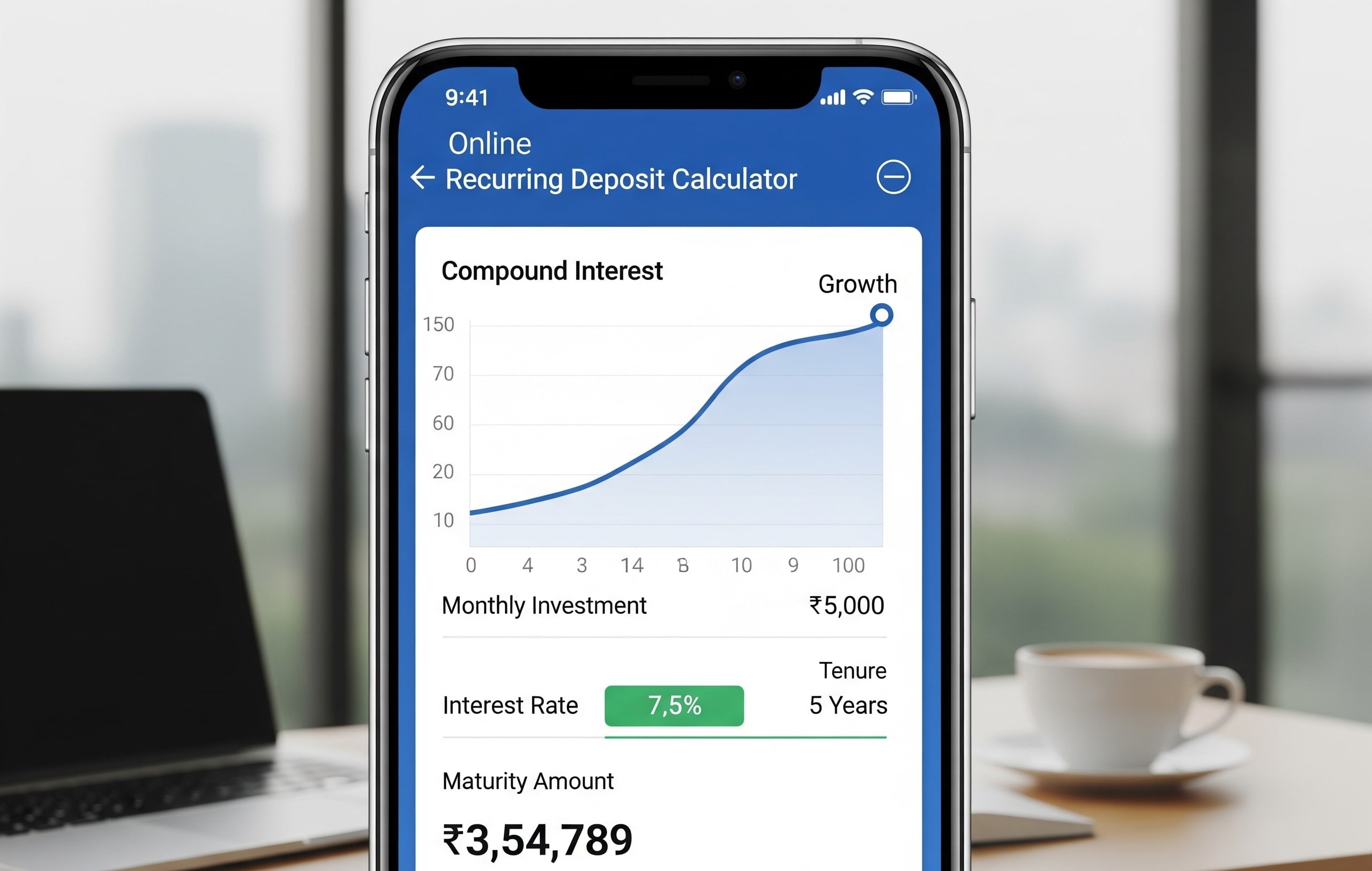
Post Office Saving Schemes are among the most trusted investment options in India, backed by the government to ensure safety and reliable returns. These schemes cater to a variety of financial goals, from short-term savings to long-term wealth creation, while offering tax benefits. Let’s dive deep into the details of these schemes to help you make informed investment decisions.
Also Read: Mahila Samman Bachat Patra: All You Need to Know
What Are Post Office Saving Schemes?
Post Office Saving Schemes are financial products offered by the Department of Posts, aimed at encouraging savings among individuals. These schemes are especially popular for their guaranteed returns and low-risk nature. Here’s an overview of the available options
Types of Post Office Saving Schemes
| Scheme Name | Interest Rate (as of Jan 2025) | Tenure | Tax Benefits |
|---|---|---|---|
| Savings Account | 4% per annum | No fixed tenure | No tax benefits |
| Recurring Deposit (RD) | 6.5% per annum | 5 years | No tax benefits |
| Time Deposit (TD) | 6.8% to 7.5% per annum | 1-5 years | Tax benefits on 5-year deposit |
| Monthly Income Scheme (MIS) | 7.4% per annum | 5 years | No tax benefits |
| Public Provident Fund (PPF) | 7.1% per annum | 15 years | Tax-free returns under Section 80C |
| Senior Citizen Savings Scheme (SCSS) | 8.2% per annum | 5 years | Tax benefits under Section 80C |
| Sukanya Samriddhi Yojana (SSY) | 8.0% per annum | Until the child turns 21 | Tax-free returns under Section 80C |
| National Savings Certificate (NSC) | 7.7% per annum | 5 years | Tax benefits under Section 80C |
| Kisan Vikas Patra (KVP) | 7.5% per annum | Maturity in 115 months | No tax benefi |
Why Should You Invest in Post Office Saving Schemes?
Post Office Saving Schemes stand out as an ideal choice for risk-averse investors. Below are the key benefits:
- Government Backing: Ensures high reliability and safety of investments.
- Guaranteed Returns: Fixed interest rates ensure predictable earnings.
- Diverse Options: Caters to various financial needs, from short-term goals to retirement planning.
- Tax Benefits: Certain schemes offer deductions under Section 80C.
- Accessibility: Easy to open and manage accounts through the extensive post office network.
Also Read: Best Investment Plan for 5 Years
Which Post Office Saving Schemes Are Best for You?
Choosing the right scheme depends on your financial goals, risk appetite, and investment horizon. Here are some common scenarios:
1. For Regular Income
- Best Scheme: Monthly Income Scheme (MIS)
- Why Choose: Offers steady monthly payouts for supplementary income.
2. For Long-Term Wealth Creation
- Best Scheme: Public Provident Fund (PPF) or Sukanya Samriddhi Yojana (SSY)
- Why Choose: Provides high interest rates with tax-free returns, ideal for retirement or children’s education.
3. For Senior Citizens
- Best Scheme: Senior Citizen Savings Scheme (SCSS)
- Why Choose: High-interest rates and tax benefits designed specifically for retirees.
Also Read: Why Investment Is Important Once You Start Your Career
How to Maximize Returns From Post Office Saving Schemes?
To make the most of these schemes, follow these tips:
- Diversify Investments: Combine multiple schemes like PPF for long-term goals and MIS for monthly income.
- Leverage Tax Benefits: Use tax-saving options like SCSS and NSC to reduce taxable income.
- Plan for Inflation: Choose schemes with inflation-beating returns, like Sukanya Samriddhi Yojana.
- Stay Updated: Interest rates are reviewed quarterly; monitor changes to optimize your portfolio.
Comparison of Post Office Saving Schemes With Other Investments
| Feature | Post Office Saving Schemes | Bank Fixed Deposits | Mutual Funds |
| Risk Level | Very Low | Low to Moderate | High |
| Returns | Fixed | Fixed | Market-linked |
| Tax Benefits | Available (Section 80C) | Available (Section 80C) | Limited |
| Liquidity | Moderate | High | High |
Market Updates on Post Office Saving Schemes (2025)
The Indian government periodically revises interest rates for Post Office Saving Schemes. For the January-March quarter of 2025, rates have been slightly increased for select schemes like:
- Senior Citizen Savings Scheme: Raised to 8.2% per annum.
- Kisan Vikas Patra: Maturity period reduced to 115 months.
These changes make the schemes even more attractive for risk-free investors.
Frequently Asked Questions About Post Office Saving Schemes
1. Are Post Office Saving Schemes Better Than Fixed Deposits?
Both Post Office Saving Schemes and Fixed Deposits (FDs) offer guaranteed returns, but Post Office schemes often have higher interest rates and added tax benefits. For instance, the Senior Citizen Savings Scheme offers 8.2%, compared to many bank FDs offering lower rates.
2. How Can I Open a Post Office Saving Scheme Account?
You can open an account by visiting the nearest post office. Carry the following documents:
- Identity proof (Aadhaar, PAN)
- Address proof
- Passport-sized photographs
- Duly filled application form
Some schemes may also allow online applications through India Post’s official website.
3. What Happens if I Withdraw Early?
Premature withdrawal is allowed in certain schemes but usually comes with penalties. For example:
- Recurring Deposit: Allowed after 3 years with reduced interest.
- National Savings Certificate: Permitted in case of emergencies, subject to conditions.
4. Are Post Office Saving Schemes Taxable?
Interest earned from certain schemes like PPF and Sukanya Samriddhi Yojana is entirely tax-free, while others like MIS and KVP are taxable. Additionally, investments in SCSS, NSC, and PPF qualify for deductions under Section 80C.
5. Can NRIs Invest in Post Office Saving Schemes?
Non-Resident Indians (NRIs) are generally not allowed to open new accounts under Post Office Saving Schemes. However, if an individual becomes an NRI after opening an account, they may continue to maintain the account until maturity, subject to certain conditions.
6. Is There a Minimum Balance Requirement?
Yes, most schemes have a nominal minimum balance requirement. For instance, the Post Office Savings Account requires a minimum balance of Rs. 500.
7. Can I Transfer My Account to Another Post Office?
Yes, Post Office Saving Scheme accounts are transferable between post offices across India. This ensures convenience for individuals who relocate frequently.
8. Are Joint Accounts Allowed?
Certain schemes, like the Monthly Income Scheme (MIS) and Time Deposits, allow joint account holders. This is especially beneficial for families planning investments together.
9. How Are Interest Rates Determined?
Interest rates for Post Office Saving Schemes are revised quarterly by the government, based on prevailing economic conditions and market yields.
10. Can I Nominate a Beneficiary for My Account?
Yes, nomination facilities are available for all Post Office Saving Schemes. You can designate a beneficiary at the time of account opening or update it later.
More Investment Stories:
Hello there, my name is Phulutu, and I am the Head Content Developer at Nivesh Karlo. I have 13 years of experience working in fintech companies. I have worked as a freelance writer. I love writing about personal finance, investments, mutual funds, and stocks. All the articles I write are based on thorough research and analysis. However, it is highly recommended to note that neither Nivesh Karlo nor I recommend any investment without proper research, and to read all the documents carefully.






Leave a Reply